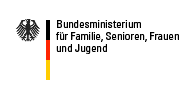Gender
What is “Gender”?
The term Gender comes from Anglo-American and is now established as a technical term in German as well. The English term has been adopted because there is only the one word, “Geschlecht”, in German, meaning both ‘sex’ and ‘gender’, which most people associate only with biological sex. The use of the German word has therefore been linked with the risk of losing sight of gender as a social and cultural set of conditions that changes over time. Modern research starts with the assumption that “Geschlecht” always includes social, cultural, political and biological components, which can change over time (Becker-Schmidt / Knapp, 2000). This is why in German-language contexts the term ‘gender’ is preferred. The term “Geschlecht” (in the meaning of biological sex) can also be used, however, in the same way as the term ‘sex’ is used in English-language contexts, if clarity is required as to the meaning involved or the particular dimension of gender that is being discussed.
Gender was for a long time a category that was discussed mainly in academic women’s and gender studies research. There are a great many universities worldwide which scientifically study and teach the development of gender relations in Gender Studies courses. The Humboldt University in Berlin was the first university in Germany to offer such a course, setting up its transdisciplinary Gender Studies major in 1997. Since then, a great many more Gender Studies courses have been set up. In the course of implementing the strategy Gender Mainstreaming, the term gender has been freed from purely academic contexts and can be found today in many political and everyday discussions. There are four dimensions to the practical and political characteristics and impacts of Gender, to which the European Commission refers with reference to the OECD:
You can find more explanations concerning gender here:
Gender was for a long time a category that was discussed mainly in academic women’s and gender studies research. There are a great many universities worldwide which scientifically study and teach the development of gender relations in Gender Studies courses. The Humboldt University in Berlin was the first university in Germany to offer such a course, setting up its transdisciplinary Gender Studies major in 1997. Since then, a great many more Gender Studies courses have been set up. In the course of implementing the strategy Gender Mainstreaming, the term gender has been freed from purely academic contexts and can be found today in many political and everyday discussions. There are four dimensions to the practical and political characteristics and impacts of Gender, to which the European Commission refers with reference to the OECD:
- representation in political and social spheres (e.g. participation in decision-making and public and private division of labour between the sexes)
- living conditions (e.g. affluence, poverty, being victim to violence and exclusion)
- resources (e.g. distribution of time, money, mobility or information) and
- norms and values (e.g. stereotypes, role assignment, images, language).
You can find more explanations concerning gender here:
Further reading:
European Commission: A Guide to Gender Impact Assessment
Becker-Schmidt, Regina/ Knapp Gudrun-Axeli: Feministische Theorien zur Einführung. Hamburg 2000.
Glossar Recht und Geschlecht an der HU-Berlin: Gender
Baer, Susanne / Enders-Dragässer, Uta / Kuhl, Mara / Kreß, Brigitta / Sellach, Brigitte: Wissensnetz Gender Mainstreaming für die Bundesverwaltung, Frankfurt am Main und Berlin, Dezember 2003.
Zentrum für transdisziplinäre Geschlechterstudien an der Humboldt-Universität zu Berlin (Hg.): Geschlechterstudien im deutschsprachigen Raum - Studiengänge, Erfahrungen, Herausforderungen. Trafo Verlag, Berlin 2004.
Becker-Schmidt, Regina/ Knapp Gudrun-Axeli: Feministische Theorien zur Einführung. Hamburg 2000.
Glossar Recht und Geschlecht an der HU-Berlin: Gender
Baer, Susanne / Enders-Dragässer, Uta / Kuhl, Mara / Kreß, Brigitta / Sellach, Brigitte: Wissensnetz Gender Mainstreaming für die Bundesverwaltung, Frankfurt am Main und Berlin, Dezember 2003.
Zentrum für transdisziplinäre Geschlechterstudien an der Humboldt-Universität zu Berlin (Hg.): Geschlechterstudien im deutschsprachigen Raum - Studiengänge, Erfahrungen, Herausforderungen. Trafo Verlag, Berlin 2004.
erstellt von Administrator
—
zuletzt verändert:
02.01.2010 20:08






